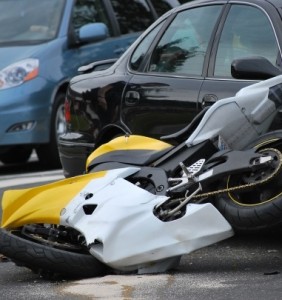 Rear-end motorcycle accidents where a motorbike is stuck from behind by a vehicle can kill or seriously injure motorcyclists not just from the impact of the crash, but also from the rider being thrown onto the road. An example of this type of accident unfortunately happened recently on Interstate 635 in Wyandotte County that caused the tragic death of a female motorcyclist.
Rear-end motorcycle accidents where a motorbike is stuck from behind by a vehicle can kill or seriously injure motorcyclists not just from the impact of the crash, but also from the rider being thrown onto the road. An example of this type of accident unfortunately happened recently on Interstate 635 in Wyandotte County that caused the tragic death of a female motorcyclist.
The Kansas City Star reported that on Aug. 3, a 61-year-old Kansas City woman was killed after her 2009 Kawasaki was struck from behind by a northbound 2012 Ford Focus shortly before 11 p.m. on Interstate 635 in Kansas City near the Kansas Avenue Exit. The impact caused the motorcyclist to be thrown from the bike.
It was reported that the motorcyclist, who was wearing protective glasses and a helmet, was pronounced dead at the scene. The 36-year-old driver of the car allegedly fled the crash scene and was allegedly under the influence of alcohol at the time of the collision. He was reported to have been arrested and facing multiple charges.
Rear-end accidents can be deadly collisions for motorcyclists who don’t have the same protection provided by cars or trucks. When a passenger car or truck is involved in a motor vehicle collision, the occupants of the vehicle are protected by a metal cage and crumple zones on their vehicle, but motorcycle riders have no protective barriers that can shield them during an impact.
While driving always involves some inherent risk, there’s even more risk when riding a motorcycle. A motorcycle can be rear-ended by a car or truck when the driver is distracted, following too closely, speeding, intoxicated, or the vehicle’s brakes or other equipment fails to function properly, causing the vehicle to hit the motorcycle from behind. When a rear-end motorcycle accident occurs, the motorcyclist may be thrown from the bike and can sustain catastrophic injuries upon hitting the pavement or another vehicle.
In the case of a death due to the recklessness or negligence of another person, the surviving family of the decedent may have the option to pursue a wrongful death lawsuit against the person or entity potentially liable for their losses.




